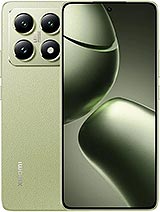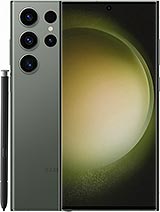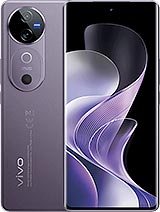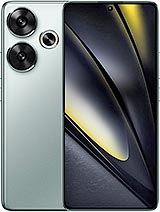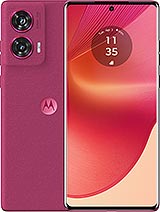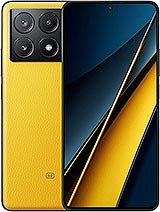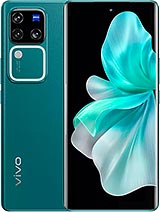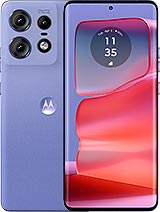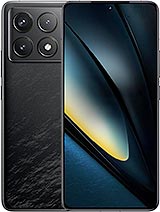vivo V40 review

Display
The vivo V40 has a great display. It is large at 6.78 inches with a standard 20:9 aspect ratio and a 1260 x 2800 pixel resolution. That works out to around 453 ppi, which is incredibly sharp. The display bezels are quite thin, and the V40 has a screen-to-body ratio of around 90.1%. As already mentioned, the display is aggressively curved.

On the surface, the panel in the V40 looks very similar to the one in the V30. However, it is clearly upgraded and much brighter, with an advertised peak brightness of 4,500 nits.
In our testing, the V40 managed 570 nits of max brightness on the slider and a very admirable 1,353 nits in max auto mode. That's more than enough to be comfortable outdoors.
The measured brightness at point white at minimum brightness is 2.3 nits.
The display supports up to 120Hz refresh rate, and there are three refresh modes - 120Hz, 60Hz and Smart Switch. The 120Hz and the Smart Switch drop down to 60Hz when the screen shows static content, but the Smart Switch is more limiting - often capping the system UI and apps to 90Hz or even 60Hz.

The vivo V40 comes with the highest possible Widevine L1 DRM certification, allowing apps like Netflix to offer up to Full-HD and higher streams. The phone supports HDR10, HDR10+, and HLG (no Dolby Vision).
Battery life
The vivo V40 has a 5,500 mAh battery pack, which is a bit bigger than the 5,000 mAh pack of the V30. Both devices use the same chipset, and our battery tests are conducted at a standardized fixed display brightness, which means that the brighter display on the V40 shouldn't affect scores. Hence, going into testing, we expected the V40 to manage slightly better numbers than the V30, and that is precisely what we got.

The vivo V40 managed an excellent Active Use Score of 16:37 hours with exemplary numbers across the board. For whatever reason, the biggest uptick in battery life over the V30 is in gaming, which we test at a 60Hz refresh rate (with touch).
Charging speed
The vivo V40 advertises 80W wired charging. Our phone didn't come with a charger, so we used the 80W charger which ships with the vivo V30. Other regions (like India) might get a power adapter in the box so check with your retailer.

Fifteen minutes on the charger got us from zero to 36%, another fifteen minutes brought it up to 66%, and a full charge took 46 minutes. It's a great result even if it's a bit slower than the vivo V30. After all, the V40's battery is 10% bigger.
Speakers - loudness and quality
Vivo's V series has long been scrutinized by fans for not including a stereo speaker setup. Well, now the V40 does offer a stereo setup. It is of the hybrid variety, with the earpiece acting as the second channel.
Vivo has implemented stereo competently here. Each of the speakers plays some of the opposing speaker's output for the purposes of crossfade cancellation. The output sounds very clean and crisp. The V40 managed a VERY GOOD loudness score in our testing. The sound stage is rich and wide.
Regarding extra audio features, the V40 offers Audio Super Resolution, which promises to optimize sound quality automatically. There is also Super Audio, which is yet another optimization system.
Use the Playback controls to listen to the phone sample recordings (best use headphones). We measure the average loudness of the speakers in LUFS. A lower absolute value means a louder sound. A look at the frequency response chart will tell you how far off the ideal "0db" flat line is the reproduction of the bass, treble, and mid frequencies. You can add more phones to compare how they differ. The scores and ratings are not comparable with our older loudspeaker test. Learn more about how we test here.
Connectivity
The vivo V40 is a dual SIM device. It comes with two nano-SIM slots and eSIM support. Both SIM cards support SA/NSA Sub-6 5G connectivity. The V40 has GPS, GALILEO, GLONASS, QZSS, BDS and NavIC for location. Local connectivity is handled by dual-band Wi-Fi 6/ax and Bluetooth 5.4 with LE support. There is NFC as well, though it is market-dependent as well. There is no FM radio receiver and no 3.5mm audio jack.

A simple USB 2.0 data connection backs up the Type-C port. That means a theoretical max transfer rate of 480 Mbps. There is no video out or anything fancy like that. The V40 does offer USB Host/OTG functionality, though.
The V40 has a pretty solid assortment of sensors. Disappointingly, however, there doesn't seem to be a hardware proximity sensor, but rather a virtual one that is unreliable when turning off the display during calls.
There is a lsm6dsox accelerometer, a vivo-branded gyroscope, a stk36c31 light sensor and a vivo-branded magnetometer and compass. There is no barometer on board.
Reader comments
- Build quality
- 04 Feb 2025
- CbI
My phone buyed on November 15 2024 Vivo v40 8+128gb variant #more cosmetic issues in just Week Like scratches dents camera lens scratch back panel Broken in edges I am dissatisfaction 🥲 Thank you !
- BC57
- 19 Jan 2025
- Rxc
It's an embarrassment putting 2.2 ufs on just about any phone. Whoever is making these decisions should be fired.
- BC57
- 19 Jan 2025
- Rxc
V40 is only 2.2 for the ufs. That is ridiculous not having ufs 4.0 on this phone. WTF was vivo thinking?
